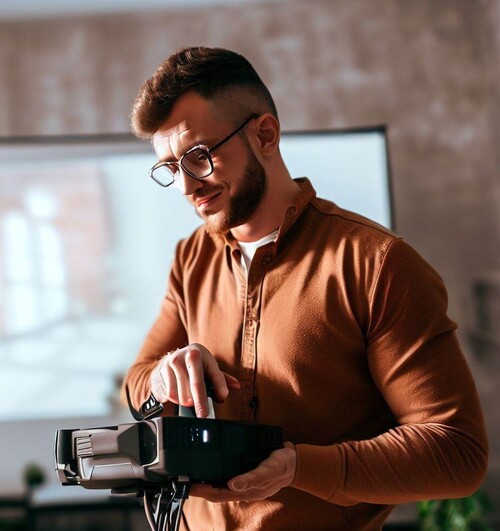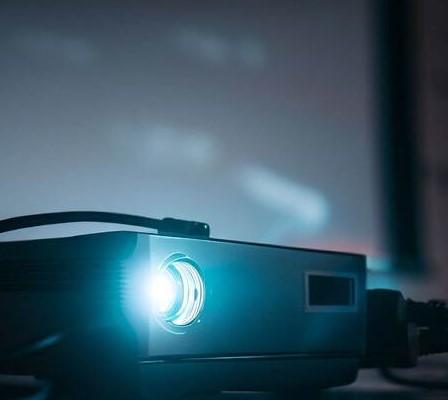
Introduction
Have you ever encountered a situation where your projector is connected to a device but fails to display anything on the screen? It can be frustrating and confusing, especially when you’re trying to set up a presentation or enjoy a movie night. In this article, we will explore the common reasons why your projector might not be displaying anything and provide you with some troubleshooting tips to help you resolve the issue. So, if you’re wondering, “Projector connected but not displaying?” – read on to find out what might be causing the problem and how to fix it.

Understanding the Problem: Projector Connected but Not Displaying?
Before we dive into the troubleshooting tips, let’s first understand the problem at hand. When you connect your projector to a device, such as a laptop or DVD player, you expect to see the content displayed on the screen. However, if the projector remains blank or shows no signal, it indicates that there is a problem in the connection or configuration.
Troubleshooting Tips: Resolving the Issue
To help you get your projector up and running, we’ve compiled a list of troubleshooting tips that you can try. These methods will guide you through the common issues that cause a projector to be connected but not display anything. Follow these steps to identify and resolve the problem:
1. Check the Physical Connections
The first step is to ensure that all the physical connections between your projector and the device are properly established. Here’s what you should do:
- Inspect the cables: Check if the cables connecting the projector and the device are securely plugged in. Sometimes, loose or damaged cables can prevent the signal from reaching the projector.
- Verify the input source: Ensure that the projector is set to the correct input source. Many projectors have multiple input options, such as HDMI, VGA, or DisplayPort. Make sure you have selected the appropriate input source that matches the cable you are using.
2. Adjust the Display Settings on Your Device
If the physical connections are intact, the issue might lie with the display settings on your device. Follow these steps to adjust the display settings:
- Windows: Right-click on the desktop and select “Display settings.” Ensure that the correct display is selected as the primary monitor and that the resolution is set to a compatible value for your projector.
- Mac: Go to the Apple menu and select “System Preferences.” Click on “Displays” and check if the correct display is selected. Adjust the resolution if necessary.
3. Power Cycle the Devices
Sometimes, a simple power cycle can fix connectivity issues. Try the following steps:
- Turn off the projector and the connected device: Switch off both the projector and the device you are trying to connect.
- Disconnect the power cords: Unplug both the projector and the device from the power source.
- Wait for a few minutes: Allow a few minutes for any residual power to drain.
- Reconnect and power on: Plug the power cords back in and turn on the projector and the device. Check if the display appears now.
4. Test with a Different Cable or Port
Cables can become faulty over time or due to accidental damage. To rule out any cable-related issues, try the following steps:
- Try a different cable: If possible, swap out the existing cable with a known working one. This will help determine if the problem lies with the cable itself.
- Use a different port: If your projector has multiple input ports (e.g., HDMI 1, HDMI 2), try connecting the device to a different port. Sometimes, a specific port may have issues while others work fine.
5. Check the Projector’s Lamp
In some cases, the projector’s lamp may be the culprit behind the lack of display. Follow these steps to ensure that the lamp is functioning correctly:
- Check the lamp indicator: Most projectors have a lamp indicator that lights up or blinks when the lamp needs to be replaced. Refer to the projector’s manual to understand the meaning of the indicator lights and check if the lamp needs to be replaced.
- Inspect the lamp physically: If the indicator doesn’t provide any specific information, visually inspect the lamp. Look for any signs of damage, such as a broken filament or discoloration. If you notice any abnormalities, it’s likely that the lamp needs to be replaced.
6. Update Firmware and Drivers
Outdated firmware or drivers can sometimes cause compatibility issues, resulting in a blank display. Follow these steps to update the firmware and drivers:
- Projector firmware: Check the manufacturer’s website for any available firmware updates for your projector model. Follow the instructions provided to update the firmware.
- Device drivers: Visit the official website of your device’s manufacturer and search for the latest display drivers. Download and install the drivers specific to your operating system.

Conclusion
Encountering the problem of a projector connected but not displaying can be frustrating, but with the right troubleshooting steps, you can resolve the issue and get your projector back in working condition. Remember to check the physical connections, adjust display settings, power cycle the devices, test with different cables or ports, check the projector’s lamp, and update firmware and drivers if needed. By following these steps, you’ll increase the chances of getting your projector to display properly and enjoy your presentations, movies, or any other content seamlessly.
Frequently Asked Questions
Here are some frequently asked questions related to the issue of a projector connected but not displaying, along with their answers:
1. Why is my projector not displaying anything even when it’s connected properly?
There can be several reasons for this, such as incorrect display settings, faulty cables, or a malfunctioning lamp. Follow the troubleshooting tips mentioned earlier to identify and resolve the issue.
2. How do I know if the projector lamp needs to be replaced?
Check the lamp indicator on your projector. If it’s blinking or showing a specific pattern, consult the projector’s manual to understand its meaning. Additionally, visually inspect the lamp for any signs of damage or discoloration.
3. Can a faulty cable cause a projector not to display?
Yes, a faulty or damaged cable can disrupt the signal transmission between the projector and the device, resulting in no display. Try using a different cable to rule out any cable-related issues.
4. Why is it important to update the firmware and drivers?
Updating the firmware and drivers ensures that your projector and device are compatible with each other. It also helps resolve any known bugs or issues that may affect the display functionality.
5. Are there any specific display settings I need to adjust?
Make sure the projector is set to the correct input source and that the display resolution is compatible with the projector. Adjust these settings on your device accordingly.
6. What should I do if none of the troubleshooting tips work?
It is advised to get in touch with the manufacturer’s customer service if the problem remains after you have attempted all the suggested troubleshooting measures. They will be able to provide specific guidance based on your projector model.